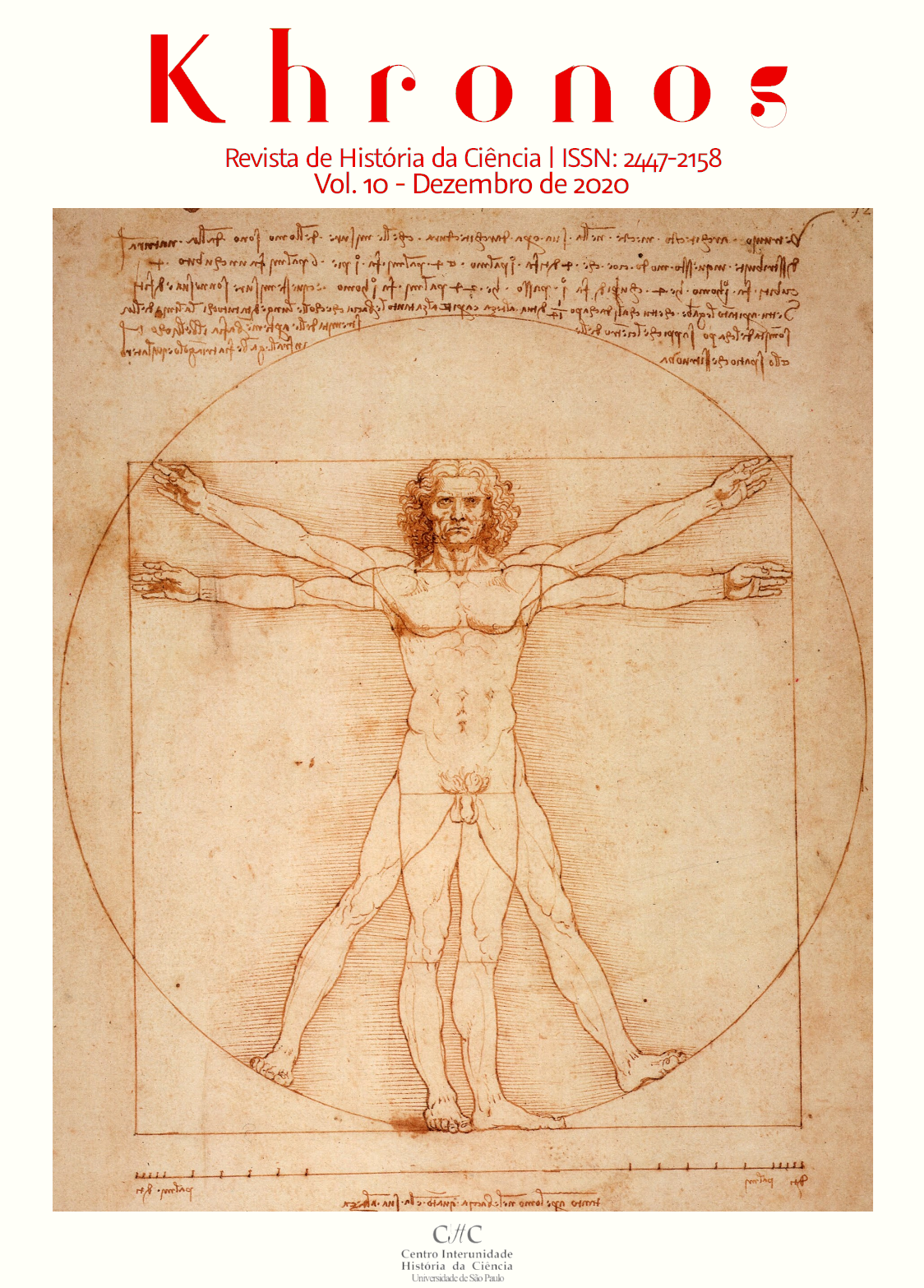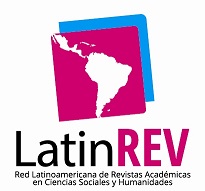Arts and Science in 19th century: Charles Le Brun and the melancholic temperament
DOI:
https://doi.org/10.11606/issn.2447-2158.i10p28-46Keywords:
Hypocritic-Galenic medicine, aesthetics, Charles Le Brun, Melancholy, Anatomy, Temperaments, Theory of humours, PhysiognomonyAbstract
In the Hippocratic-Galenic tradition, the balance of bodily humours meant a healthy condition. Those humours in different combinations resulted in temperaments. These temperaments determined the character of man, his psychological aspects, physical appearance and affections. Among the main temperaments (bloody, choleric, melancholic and phlegmatic), the melancholic was the most harmful. Responsible for the most diversified psychic alterations, being the object of study of medical, anatomical treaties and artistic, literary and philosophical representations in different historical periods, since the Classic Antiquity. In the Arts field, it inspired an iconography of emotions, strengthening the intrinsic relationship between the soul and the body, especially in the expression of the face. The objective of this article is to study how the melancholic temperament appeared in the iconographic production of the artist Charles Le Brun (1619-1690). This research led to the conclusion that Le Brun transferred the knowledge of Hippocratic-Galenic medicine, physiognomony, anatomy and passions to his pictorial representations. He separated body and soul, dedicating himself to the study of passions instead of character. Besides, he was concerned with the theoretical aspects of painting.
Downloads
References
AIKEN, Lewis R. Psychological testing and assessment. 9 ed. Massachusetts: Allyn and Bacon, 1997.
ALBUQUERQUE, Carlos Eduardo M. A fisiognomonia de Charles Le Brun – A educação da face e a educação do olhar. Pró-Posições, v. 16, n. 2, p. 15-35, 2005.
ATALAIA, Nuno. The portrait of the sovereign: painting as hegemonic practice in the work and discourse of Charles Le Brun and the Royal Academy of Painting. Dissertation (MD). Faculty of Humanities, University of Leiden, 2017.
BALTRUŠAITIS, Jurgis. Aberrações: ensaio sobre a lenda das formas. Rio de Janeiro: Editora da UFRJ, 1999.
BRADY, Emily. HAPPALA, Arto; Melancholy as an Aesthetic Emotion. Contemporary Aesthetics, v. 1, p. 1-16, 2003.
BARBILLON, Claire. Les canons du corps humain au XIXème siècle: l'art et la règle. Paris: Odile Jacob, 2004.
BRUNSCHWIG, Jacques & LLOYD, Geoffrey. E. R. A guide to Greek thought: major figures and trends. Catherine Porter (Trad.). Cambridge/MA: Belknap Press, 2003.
CARVALHO da SILVA, Paulo José. O impossível regime das paixões da alma. Revista Latinoamericana de Psicopatologia Fundamental, v. 11, p. 119-133, 2008a.
CARVALHO da SILVA, Paulo José. Um sonho frio e seco: considerações sobre a melancolia. Revista Latinoamericana de Psicopatologia Fundamental, v. 11, p. 286-297, 2008b.
COTTEGNIES, Line. Codifying the passions in the Classical Age. Études Episteme, 2009.
COTTINGHAM, John. Dicionário Descartes. Rio de Janeiro: Jorge Zahar, 1995.
COULTER, Harris L. Divided legacy: a history of schism in medical thought. Vol. 1. Washington, D.C.: Wehawken Book Company, 1975.
COURTINE, Jean-Claude; HAROCHE, Claudine. História do rosto: exprimir e calar as suas emoções (do século XVI ao início do século XIX). Lisboa: Editora Teorema, 2016.
CUREAU DE LA CHAMBRE, Les charactères des passions.[1640] Paris: D’Allin, 1662.
CRIVELLARI-FASSIS, Flávia. A iconografia da melancolia no século XVII: relações entre arte e ciência em Charles Le Brun. (Trabalho de Conclusão do Curso de Ciências Biológicas). Departamento de Biologia. Faculdade de Filosofia, Ciências e Letras de Ribeirão, Preto, Universidade de São Paulo), 2019.
DAMISCH, Hubert. La passion: L’alphabet des masques. Nouvelle Révue de Psychanalyse, n. 21, pp. 123-131, 1980.
DESCARTES, René. As paixões da alma. Trad. J. Guinsburg & B. Prado Jr., 2 Ed. São Paulo: Editora Abril, 1979. [Coleção Os pensadores].
DOLAN, John P; ADAMS-SMITH, Willam N. Health and society: A documentary history of medicine. New York: Seabury Press, 1978.
DINI, Allessandro. Il medico e la follia. Cinquanta casi di malattia mentale nella letteratura medica italiana del Seicento. Firenze: Le Lettere, 1997.
DUMORA, Florence. Topologie des émotions. Les caractères des passions de Marin Cureau de La Chambre, Littératures Classiques, v. 68, n. 1, p. 161-175, 2009.
EVANS, Elizabeth C. Galen the physician as phisiognomist. Transactionsa and Proceedings of the American Philosophical Association,, v. 76: 287-298, 1945.
GIACOMONI, Paola. Ardore. Quattro prospettive sull’ira da Achille agli indignados. Roma: Carocci, 2014.
HERRMANN, Wolfgang. La théorie de Claude Perrault. Bruxelas: Pierre Mardaga, 1980.
HERSANT, Yves. Mélancolies de l'Antiquité au XXe siècle. Paris: Robert Laffont, 2005.
HIPPOCRATE, La nature de l’homme. Trad. Jacques Jouanna. 2 ed. Berlin: Akademie Verlag, 2002.
HUIZINGA, Johan. O outono da Idade Média. São Paulo: Cosac Naify, 2013.
KLIBANSKY, Raymond; PANOFSKY, Erwin; SAXL, Fritz. Saturno y la melancolía. Madrid: Alianza Forma, 2012.
LE BRETON, David. Des visages. Essai d’anthropologie. [1992]. Paris: Métailié Sciences humaines, 2003.
LE BRUN, Charles. Le figure delle passioni: conferenze sull'espressione e la fisionomia Maurizio Giuffredi (Ed.). Milão: R. Cortina [1668], 1992.
LE BRUN, Charles. L’expression des passions. Autres conférences, correspondance. Paris: Dédale Maisonneuve et Larose, [1668] 1994.
LEVY, Evonne. Bernini and the practice of physiognomic, 2003. Disponível em: http://www.walgate.com/pdf/WendyWalgate_BerniniEssay.pdf. Acesso em: 01 nov 2017.
LICHTENSTEIN, Jacqueline. The eloquence of color: rhetoric and painting in the French Classical Age. Berkeley: University of California Press, 1993.
MAJ, Mario & SANTORIUS, Norman, Transtornos depressivos. 2 ed. Porto: Artmed, 2005.
MALUF-SOUZA, Olimpia. Fealdade e Anatomia: Sentidos instalados a partir de uma história do rosto. In: História, Subjetividade e Estética III ENALIHC - Encontro Nacional Linguagem, História e Cultura - CEPEL - Centro de Estudo e Pesquisa em Linguagem - da UNEMAT, 3 ed. do evento no Campus Universitário de Pontes e Lacerda- MT, 2009.
MARGANNE, Marie-Hèlène. La chirurgie dans l’Égypte gréco-romaine d’après les papyrus littéraires grecs. Leyde: Brill, 1998.
MARTINS, Roberto de Andrade, MARTINS, Lilian Al-Chueyr Pereira; TOLEDO, Maria Cristina Ferraz de; RIVERA, Renata Ferreira. Contágio. História da prevenção das doenças transmissíveis. 3 ed. São Paulo: Editora Moderna, 2001.
MARTINS, Lilian Al-Chueyr Pereira; SILVA, Paulo Carvalho da; MUTARELLI, Sandra Kuka. A teoria dos temperamentos: do Corpus Hippocraticum ao século XIX. Memorandum, v. 14, p. 9-24. Disponível em: WorldWide Web http://www.fafich.ufmg.br/~memorandum/a14/martisilmuta01pdf. Acesso em: 02 nov. 2016.
MASSIMI, Marina. A teoria dos temperamentos e sua aplicação nos trópicos. Ribeirão Preto: Editora Holos, 2010.
MATOS, Maria Izilda Santos. Espelhos da alma: fisiognomonia, emoções e sensibilidade. Revista Brasileira de História das Religiões, n. 14, p. 15-34, 2012, p. 19. Disponível em: http://www.dhi.uem.br/gtreligiao /index.html. Acesso em 15 nov 2016.
MONTAGU, Jennifer. The Expression of the Passions: The Origin and Influence of Charles Le Brun's Conférence sur L'expression Générale et Particulière. New Haven and London: Yale University Press, 1994.
PARRACHO, Mariana L. F. A melancolia na arquitetura a partir do cinema português. 397 f. Dissertação (Mestrado Integrado em Arquitetura) - Departamento de Arquitetura. Universidade de Coimbra, Coimbra, 2016.
PECHMAN, Robert Moses. Cidades estreitamente vigiadas: o detetive e o urbanista. Rio de Janeiro: Casa da Palavra, 2002.
PERRAULT, Claude. Mémoires pour servir a l’histoire naturelle des animaux Paris: l´Imprimerie Royale, 1671-1676.
POYATOS, Fernando. Advances in nonverbal communication. John Benjamins Publishing Company. Amsterdam: Philadelphia, 1992.
PRODGER, Phillip. Illustratrion as strategy in Charles Darwin's The expression of the emotions in man and animals. In: LENOIR, Timothy (Ed.). Inscribing Science: scientific texts and the materiality of communication. Stanford: Stanford University Press, 1998.
ROSS, Stephanie. Painting the passions: Charles Le Brun's Conférence sur L'expression. Journal of the History of Ideas, v. 45, n. 1, pp. 25-47, 1984, p. 26; DONATELLI, Marisa Carneiro de Oliveira Franco. Descartes e os médicos. Scientia Studia, v. 1, n. 3: pp. 323-336, 2003.
SERRA, Duff. The representation of the passions and affections in English theater of the seventeenth and eighteenth centuries. Doutorado. Universidade Tecnológica do Texas, Texas, 1991.
SINGER, Peter N. Levels of explanation in Galen. The Classical Quarterly, v. 47, n. 2, p. 252-542, 1997.
SOARES, Sônia. Medicina filosófica: as relações entre medicina e filosofia na Grécia Antiga e em Kant. Dissertação (Mestrado) Centro de Ciências Humanas, Letras e Artes, Universidade Federal do Rio Grande do Norte, Natal, 2008.
STAROBINSKI, Jean. Histoire du traitement de la mélancolie des origines à 1900. Basel: Documenta Geigy, 1960.
TALON-HUGON, Carole. Les Passions rêvées par la raison: Essai sur la theórie des passions de Descartes et de quelques-uns de ses contemporains. Paris: Vrin, 2002.
TEMKIN, Owsei. Galenism: rise and decline of a medical philosophy. Cornell: Cornell University, 1974.
THUILLIER, Jacques. Les dernières années de François Perrier (1646-1649). Revue de l'Art, v. 99, p. 9-28, 1993.
TREVOR, Douglas; SCHMIDT, Jeremy. Renaissance Quarterly, v. 61, n. 2, 2008, p. 664-666, 2008. VIEGAS, Rafael Marcelo. Do humor excepcional: uma melancolia para o herói ou os limites da proporção. Anamorfose: Revista de Estudos Modernos, v. 2, n. 2: 89-104, 2014, p. 90. Disponível em: http://www.anamorfose.ridem.net/index.php/anamorfose/issue/view/3. Acesso em: 20 out 2016.
WILDE, Carolyn. Introduction. In: SMITH, Paul e WILDE, Carolyn (Org.). Alberti and The Formation of Modern Art Theory. Oxford: Wiley-Blackwell, 2008.
Downloads
Published
Issue
Section
License
Copyright (c) 2020 Flávia Crivellari Fassis, Lilian Al-Chueyr Pereira Martins

This work is licensed under a Creative Commons Attribution-NonCommercial 4.0 International License.
Authors who publish in this journal agree to the following terms:
- Authors retain the copyright and grant the journal the right to first publication, with the work simultaneously licensed under the Creative Commons Attribution License in the "Attribution-NonCommercial 4.0 International" (CC BY-NC 4.0) modality that allows sharing of the work with acknowledgment of authorship and initial publication in this magazine.
- Authors are authorized to assume additional contracts separately, for non-exclusive distribution of the version of the work published in this journal (eg, publishing in institutional repository or as a book chapter), with acknowledgment of authorship and initial publication in this journal.
- Authors are allowed and encouraged to publish and distribute their work online (eg in institutional repositories or on their personal page) at any point before or during the editorial process, as this can generate productive changes, as well as increase impact and citation of the published work (See The Effect of Open Access).
- Any doubts or complaints about copyright must be directed to the Editorial Board or qualify and express themselves in accordance with the guidelines of the Committee on Publications Ethics (COPE).





